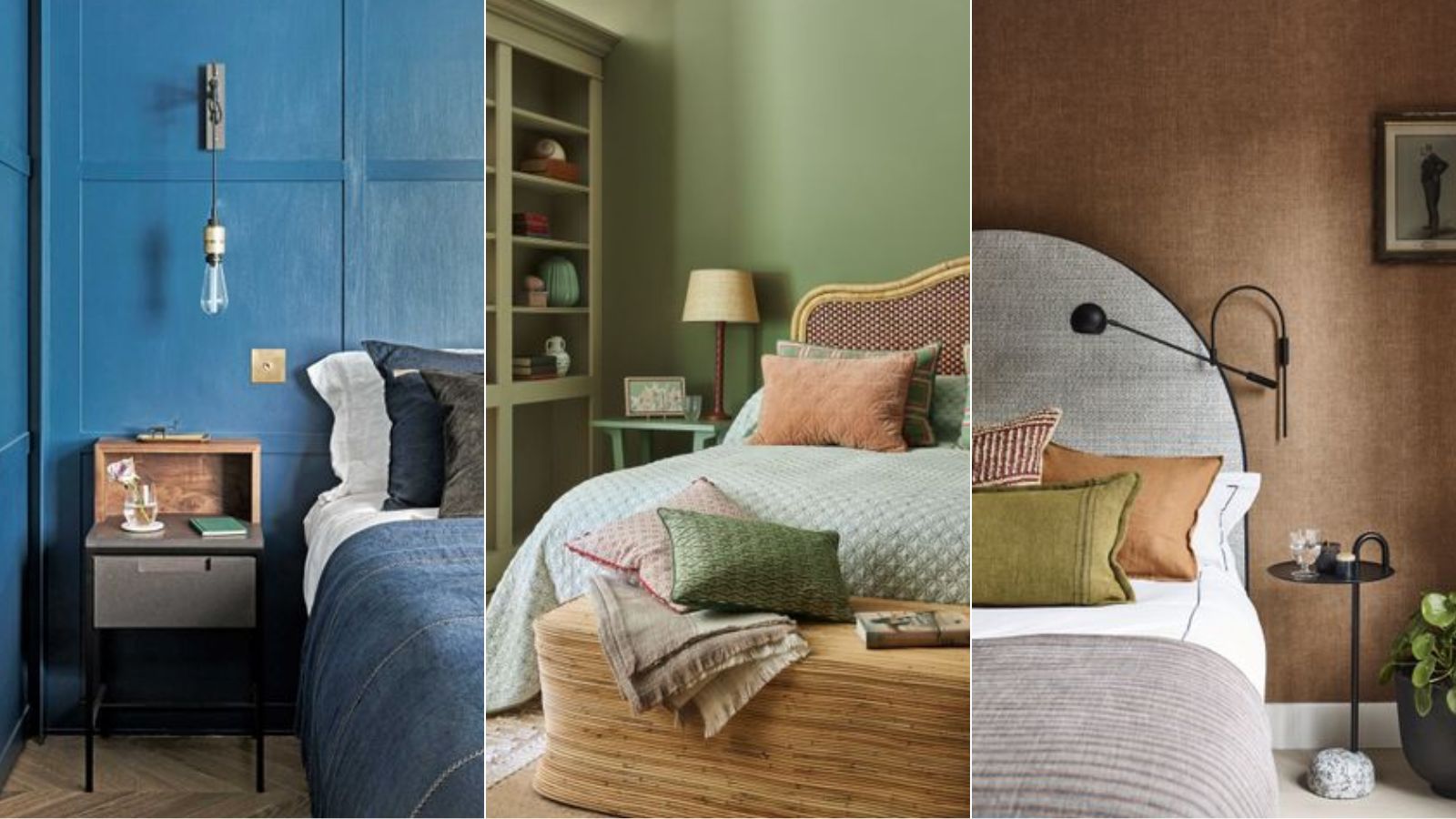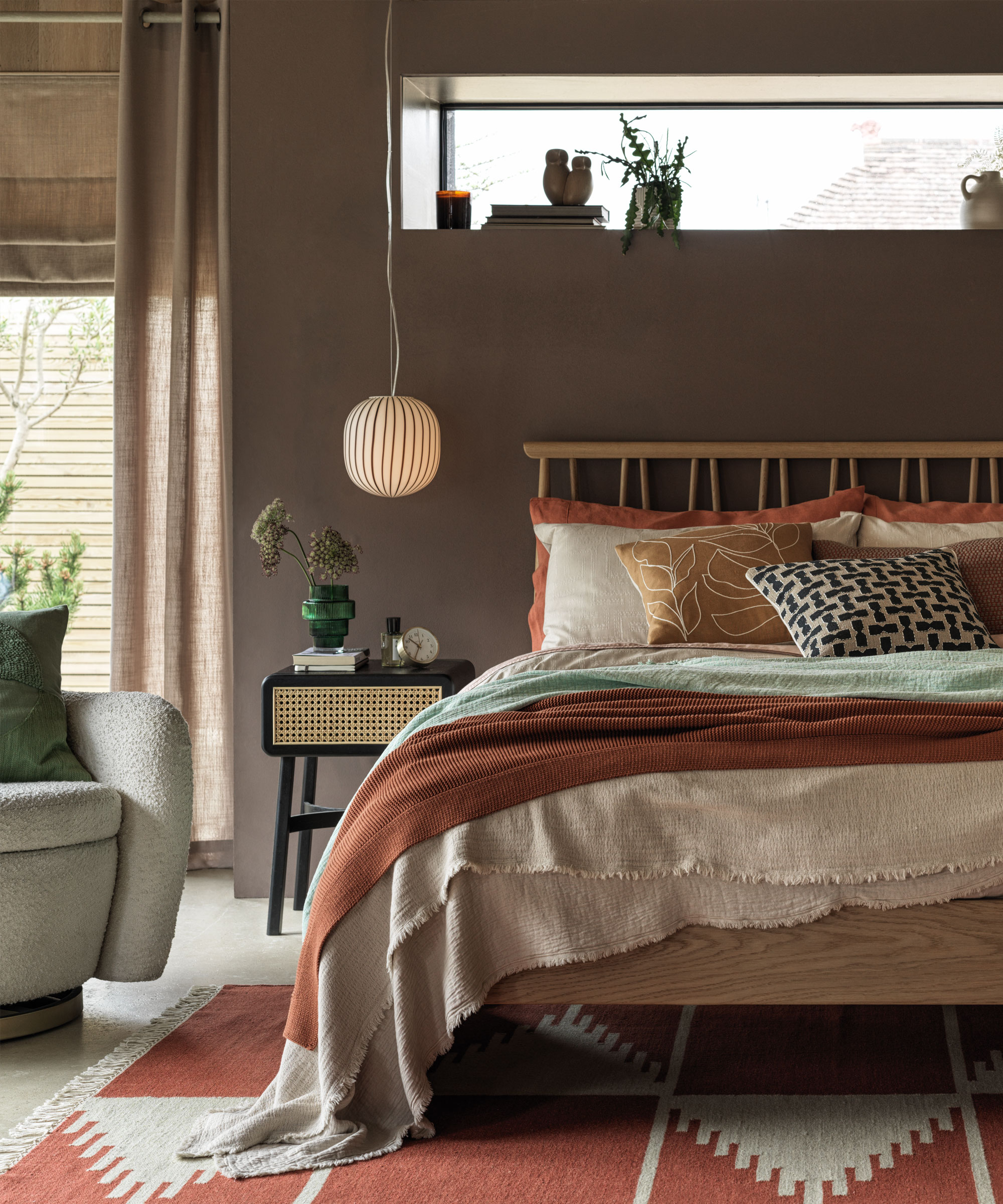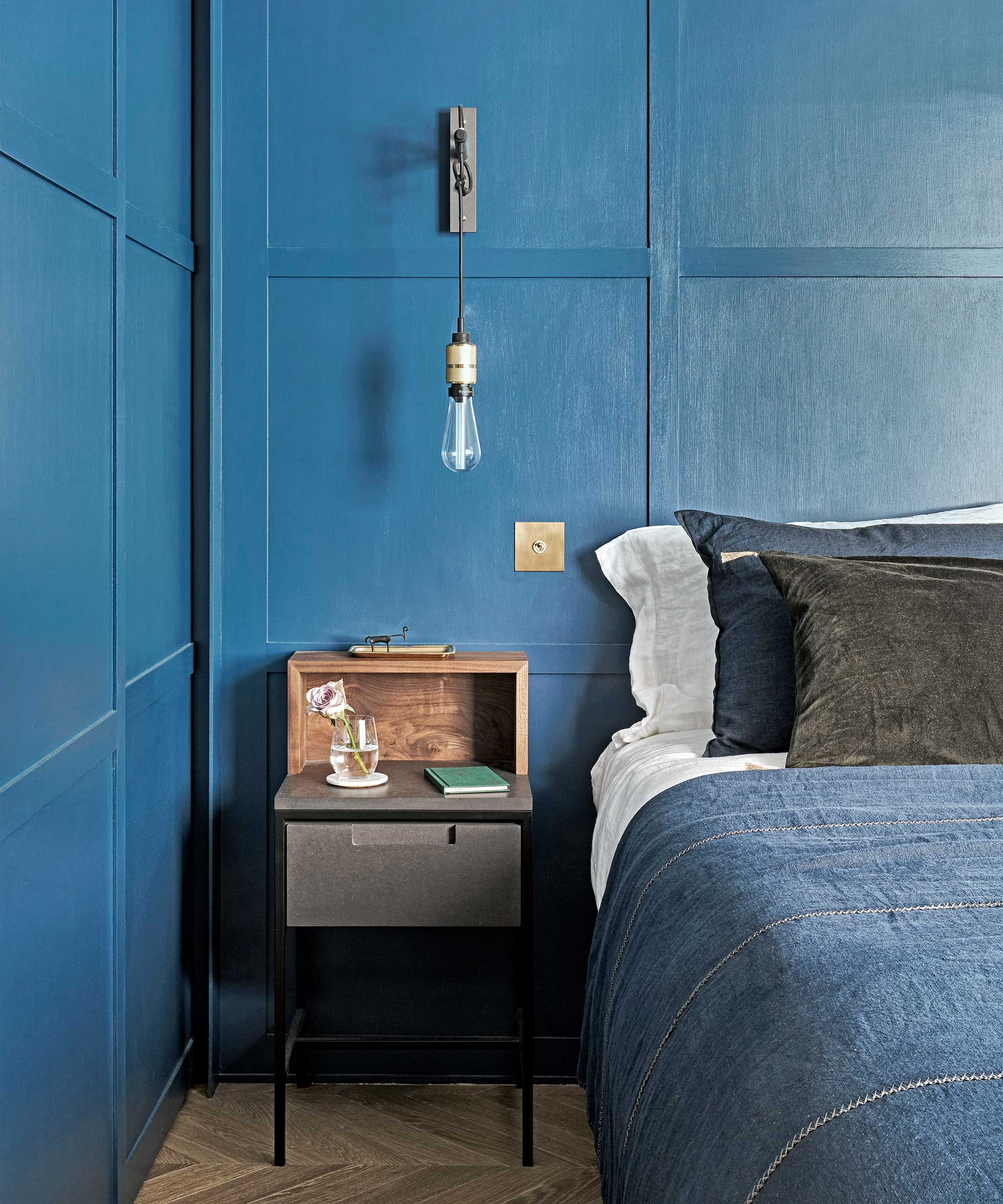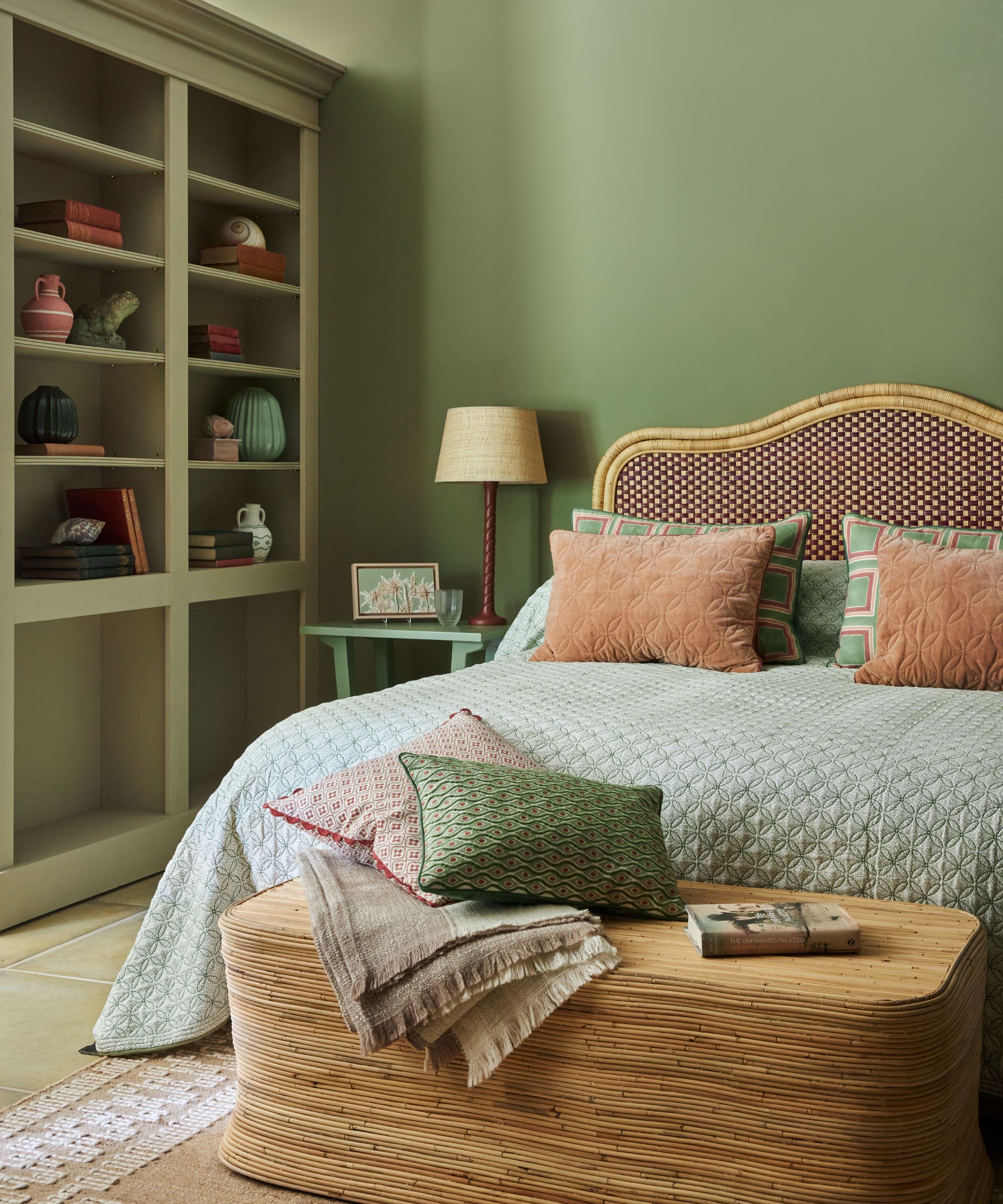The dirtiest places in a bedroom –according to cleaning and home experts
Don't let bacteria overrun your bedroom. These are the dirtiest places in a bedroom and how to clean them according to experts


Our bedrooms are host to a whole range of activities, from sleeping to working – and they house some of our dearest personal possessions and clothes. Given how much time we spend in them, it's important that our bedrooms remain an inviting and calming space.
And this all starts with cleaning your bedroom regularly to ensure that it is free of dust and dirt. Our experts have shared what they think is the dirtiest place in your bedroom and some close seconds, as well as some pro cleaning tips to make sure it doesn't stay the dirtiest place for long.
The dirtiest place in a bedroom
It's easy to forget all the different ways dirt and bacteria can get into different spots in your bedroom since what we can't see normally fails to alarm us. However, knowing how often you should clean your bedroom and targeting these dirty spots regularly will have countless benefits.
1. Your mattress

'Your bedroom sanctuary might seem like a haven of cleanliness, but appearances can be deceiving,' says Elizabeth Grace from Dream Home Making. 'The dirtiest place in your bedroom tends to be your mattress. It's a prime breeding ground for dust mites, bacteria, and allergens. Dead skin cells, sweat, and body oils accumulate over time, creating an environment that's less than sanitary.'
Angela Rubin from Hellamaid adds, 'Sweat and body moisture can penetrate the mattress, creating a conducive environment for mold and mildew growth.'
While pillowcases and bedsheets frequently become dirty and need regular changing, due to the greater propensity for dirt to become embedded in your mattresses and the greater amount of effort it takes to clean them, they are the dirtiest place in a bedroom.

Elizabeth Grace is an Interior Designer, Furniture and Home Expert. She received her degree in Interior Designing from the University of Notre Dame. Elizabeth landed her first job as an intern with a leading firm in New York City, learning from some of the city’s top designers. She currently works as an interior designer for both residential and commercial clients.

Hellamaid is an award-winning cleaning company in Canada that's been featured on multiple global media brands.
Tatyana Dimitrova from Fantastic Services advises 'Cleaning your mattress regularly is extremely important for maintaining a healthy sleeping environment.
'Generally, it’s recommended to vacuum it at least every 1 to 3 months. However, if you have allergies or pets or you're particularly concerned about dust mites, you’ll need to do it more frequently, perhaps once a month. On the other hand, your sheets, pillowcases, and blankets should be washed at least once a week, not only to keep them clean but also to prevent the transfer of sweat, oils, and debris to the mattress.
'If you're using a mattress protector, it's recommended to wash it every 1 to 2 months as it’ll help keep your mattress clean for longer.'
You should also deep clean your mattress every six to twelve months. Do this by stream-cleaning your mattress or using specialized mattress-cleaning products. If you have allergies or respiratory issues, you can do this more frequently.
Elizabeth Grace reminds us, 'Don't forget to rotate and flip your mattress every three to six months to prevent uneven wear and tear. A clean mattress not only promotes better sleep but also contributes to your overall well-being.'
2. The under bed area

While the mattress is easily the dirtiest place in a bedroom, there are a few other spots that are also often forgotten and easily accumulate dirt and dust. Given that pro cleaners say tackling dust is the first step of cleaning the bedroom, it's a good idea to clean under the bed regularly.
Karina Toner from Spekless Cleaning says, 'One common culprit for hidden dirt and dust is often the area under the bed. It's like a dust bunny haven down there, collecting all sorts of debris – it’s not just dust; you might find lost socks, pet fur, and even small items that have mysteriously disappeared over time.
'Dust particles naturally settle on the floor, and under the bed is one of the prime places they gather. Since it's not an area we see daily, it also often goes unnoticed during routine cleaning.

Karina is the Operations Manager at Spekless Cleaning, a trusted maid service based in Washington D.C. The team has over five years of experience providing top-quality cleaning services for both residential and commercial clients. Karina oversees every aspect of the business, ensuring that every client gets the same top-notch service and a spotless clean every time.
'To clean this area, start by removing any items you have put in underbed storage, such as boxes, shoes, or other storage bins. This will give you clear access to the area. A vacuum with a wand attachment or a long-handled duster can be really handy for this cleaning task. Start at one end and work your way to the other, making sure to get into the corners and crevices.
'To avoid future dirt buildup, make it a habit to vacuum under the bed during your regular cleaning routine. Once a month is a good rule of thumb,' suggests Karina Toner. Every bed is different, and because of their design cleaning underneath a bed can sometimes be a challenge. Karina Toner recommends using furniture sliders, at Amazon, which make it much easier to slide the bed out of the way, giving you better access to the space underneath.
'If sliding isn't an option, you can lift one side of the bed at a time using bed risers or asking for help. While one side is elevated, secure it in place with something sturdy, like a stack of books, so you can clean underneath. If it suits your preferences, consider placing a bed skirt or dust ruffle around the base of your bed. This can help prevent dust and debris from accumulating under the bed in the first place.'
3. Bedside tables

'The often overlooked culprit when it comes to dirt is the bedside table. It's a hotspot for dust, spilled liquids, food crumbs, and even bacteria from items like alarm clocks, phones, glasses, and books,' warns Rocky Vuong, founder of Calibre Cleaning. People frequently touch these items, transferring oils, dirt, and germs.
'The bedside table's surface and drawers are frequently used but not often cleaned,' continues Rocky Vuong. 'The combination of items stored, its frequent use, and its proximity to the bed make it a magnet for dirt and germs.
'Additionally, the proximity to the bed means that it can also accumulate skin cells, hair, and other particles that we shed during sleep.'
But how often should you clean your bedside table? Well, Rocky Vuong suggests, 'Ideally, a quick wipe down with a damp cloth should be done weekly to remove dust and any visible dirt. A deeper clean, including disinfecting and clearing out any unnecessary items, should be done at least once a month.
'Empty, vacuum, and wipe down the inside of drawers regularly, and clean and disinfect items like eyeglasses, books, or any personal care products stored on the table.'
4. Laundry hampers

Nick Valentino from Bellhop warns, 'Laundry hampers can be surprisingly filthy. I invested in a plastic laundry hamper with a solid lid in order to keep laundry scents from spreading into my bedroom between laundry days.
'This worked great for a while – until I shined a light into that hamper one day and saw stains and mold growing in the bottom of the hamper which was caused by a combination of the dark, sealed environment and my dirty clothes.
'I tried cleaning the washer and using a scented detergent without any results. Finally, I replaced that hamper with a well-ventilated wicker one with a removable, washable liner, and it worked a charm.'
Knowing how to clean a laundry hamper and purchasing one that can be wiped down and is well-ventilated to keep bacteria at bay. We recommend this Aubrey Natural Woven Laundry Hamper from Pottery Barn.
5. Pillows

'Like mattresses, pillows accumulate dust mites, allergens, and sweat, which can lead to unpleasant odors and affect your sleep quality,' says Muffetta Krueger, founder of Muffetta's Domestic Assistants.
Muffetta recommends, 'Wash pillowcases weekly, and machine wash or dry clean pillows every 3-6 months and replace pillows every 1-2 years.'

Muffetta Krueger is a cleaning expert and founder of Muffetta’s Domestic with over 16 years of operational management experience in the service industry. Muffetta’s Domestic Assistants provides housekeepers, house cleaners and maids, and is based in New York.
6. Door handles and light switches

The doorknobs and light switches in your bedroom are some of the items that get touched by hands most often, which explains why they are some of the dirtiest items in your bedroom. Since your hands carry a lot of germs, our doorknobs and light switches are transferred all the bacteria we've been exposed to since last washing our hands.
Luckily, they are easy to clean, which can be done with a disinfectant spray or an anti-bacterial wipe, once a week. We recommend these Amazon Basics Disinfecting Wipes and these Clorox Disinfecting Mist from Amazon.
What places in your bedroom are frequently overlooked when cleaning?
When cleaning quickly, there are many nooks and crannies we frequently overlook which will accumulate more dirt and bacteria the more they are neglected.
These include the top of the closet, the top of the ceiling fan, windowsills, skirting boards, picture frames, and air vents – so don't forget to give the areas some attention when doing your next clean.
Do houseplants help to keep a bedroom clean?
Although plants have air-purifying qualities, contributing to making your bedroom fresher, most houseplants, however, gather dust and, in some cases, can hold mold.
Once a month dust should be removed from the leaves of your plant – this will also keep the plant healthy, ensuring it receives maximum sunlight, enhancing its capacity to photosynthesize and deter pests.
Knowing the invisible spots in your bedroom that are often the dirtiest is key to prevention and maintaining a healthy and hygienic sanctuary.
Sign up to the Homes & Gardens newsletter
Design expertise in your inbox – from inspiring decorating ideas and beautiful celebrity homes to practical gardening advice and shopping round-ups.

Lola Houlton is a news writer for Homes & Gardens. She has been writing content for Future PLC for the past six years, in particular Homes & Gardens, Real Homes and GardeningEtc. She writes on a broad range of subjects, including practical household advice, recipe articles, and product reviews, working closely with experts in their fields to cover everything from heating to home organization through to house plants. Lola is a graduate, who completed her degree in Psychology at the University of Sussex. She has also spent some time working at the BBC.
-
 I’m an HVAC technician, and this is when I turn my AC on each year – plus 5 checks I always do beforehand
I’m an HVAC technician, and this is when I turn my AC on each year – plus 5 checks I always do beforehandSave yourself an AC hassle by running my checks and turning it on before big heat hits
By Josh Mitchell Published
-
 This simple marble hack elevates my budget-friendly wooden kitchen countertops and prevents the dreaded water damage for way less than you’d think
This simple marble hack elevates my budget-friendly wooden kitchen countertops and prevents the dreaded water damage for way less than you’d thinkThis design trick looks expensive, solves a problem, and was the easiest decision I made during my kitchen reno
By Charlotte Olby Published